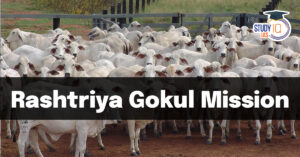Table of Contents
The e-Shram Portal, launched by the Ministry of Labour & Employment (MoL&E) in May 2021, aims to create a comprehensive national database of unorganised workers in India, particularly focusing on migrant workers. This initiative was prompted by the challenges faced by these workers during the COVID-19 pandemic, leading to a Supreme Court directive for a national worker database.
Overview of e-Shram Portal
Largest Database: The e-Shram portal is claimed to be the largest database of unorganised workers globally, with over 300 million registered workers.
Objectives
The portal’s primary goals include:
- Creating a centralized database for various categories of unorganised workers (e.g., construction workers, gig workers, street vendors).
- Enhancing the implementation of social security services and integrating various welfare schemes.
- Facilitating the portability of benefits for migrant and construction workers.
Historical Context
- The need for a national database was recognized long before the e-Shram portal’s inception:
- Interstate Migrant Workmen Act (1979): Mandated licensing for labour contractors and required them to report details about interstate workers.
- National Commission for Enterprises in the Unorganised Sector (2007): Advocated for a universal registration system for migrant workers.
- Unorganised Workers’ Social Security Act (2008): Included worker registration and identity card provisions.
- Despite these previous recommendations, implementation was lacking, leaving many migrant workers invisible and vulnerable.
Challenges Faced by Migrant Workers
Migrants, particularly seasonal and circular workers, face:
- High mobility-driven distress, disenfranchisement, and stigma.
- Poor access to public services, lack of unionisation, and trafficking.
- Exclusion from essential benefits like ration cards and food security (e.g., 80 million were excluded in 2022 despite registration).
The Launch of One-Stop Solution (OSS)
Objective: To provide seamless access to various social security schemes for e-Shram-registered workers.
Key Features
- Integration of welfare schemes like One Nation One Ration Card (ONORC), MGNREGA, PM Shram Yogi Maandhan, and National Social Assistance Programme.
- Plans to link additional schemes like PM Matru Vandana Yojana and Shramik Suraksha Yojana.
- Aims to ensure portability of benefits across states for migrant workers.
Achievements
- Registration drive reached 286 million workers by 2022.
- Positive trend: 59% of registrants are women, reflecting progress in gender inclusion in labour registration.
Concerns and Limitations
- Documentation Barriers: Migrants often lack essential identity proofs like Aadhaar or ration cards.
- Issues with mobile phone numbers (non-permanent or not linked to Aadhaar) exclude many from registration.
- The absence of proper documentation continues to hinder universal social security access.
- Lack of Comprehensive Data: Migrant workers are a heterogeneous category with socio-cultural, regional, and economic diversity.
- The absence of detailed data disaggregation hinders equitable policy design.
- Portability Issues: Interstate migrants need portable welfare entitlements, which remain a work in progress under OSS.
- Gender Sensitivity: Although women comprise a majority of e-Shram registrations, gender-sensitive policies in social security schemes are still lacking.
- Avoidance of “Freebie Culture”: Migrants should be treated as assets, not burdens. Social protection schemes must focus on human development outcomes rather than subsidies.
Future Outlook
- The government should view migrants as assets rather than merely recipients of subsidies, emphasizing human development outcomes.
- The MoL&E must ensure that welfare entitlements are transferable across states and locations.
- The 2030 Agenda for Sustainable Development warns that poorly managed migration can hinder development.
- Migrant workers contribute significantly to the Indian economy, necessitating better-designed social protection systems for their inclusion.


 Mukhyamantri Majhi Ladki Bahin Yojana, O...
Mukhyamantri Majhi Ladki Bahin Yojana, O...
 PM MITRA Parks, Objectives, Key Features...
PM MITRA Parks, Objectives, Key Features...
 Rashtriya Gokul Mission (RGM), Objective...
Rashtriya Gokul Mission (RGM), Objective...

























